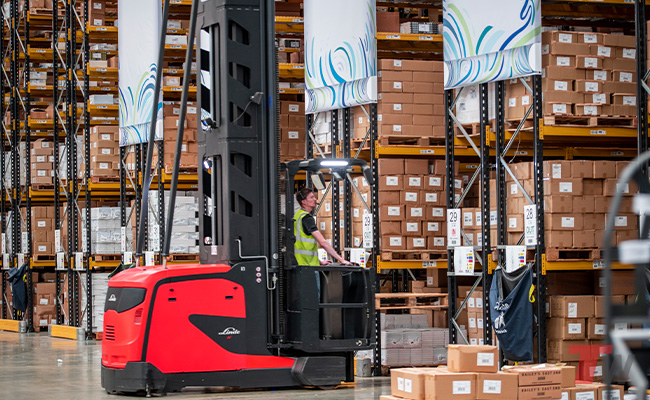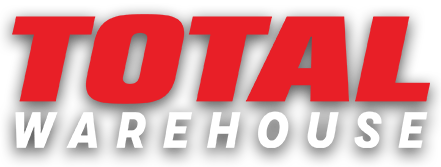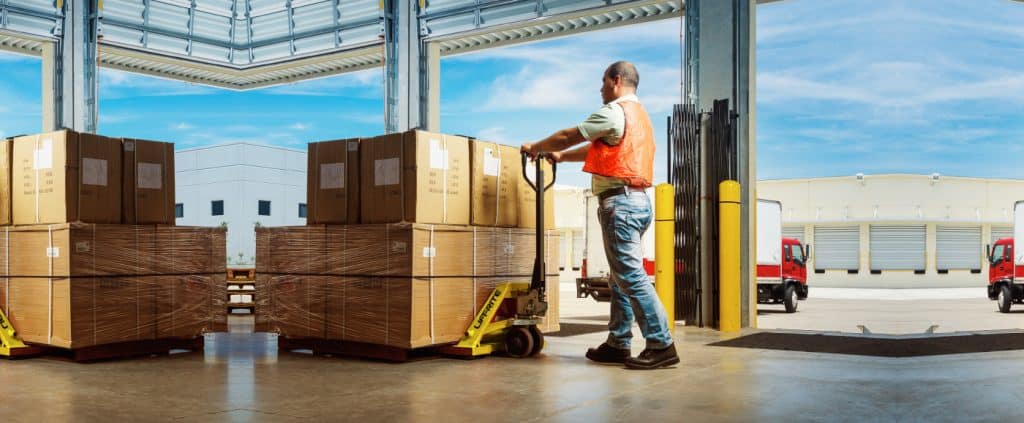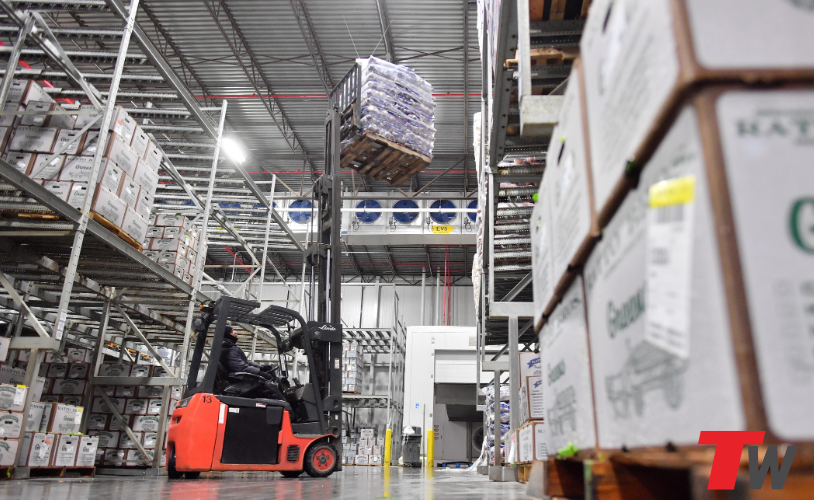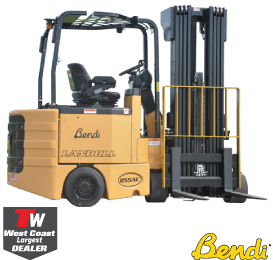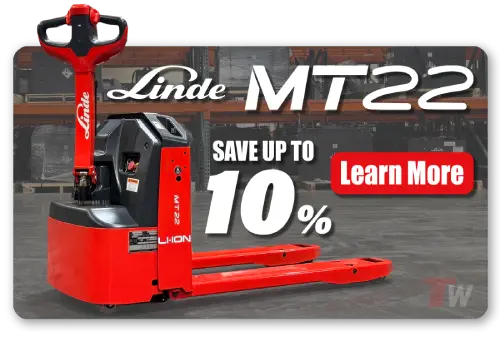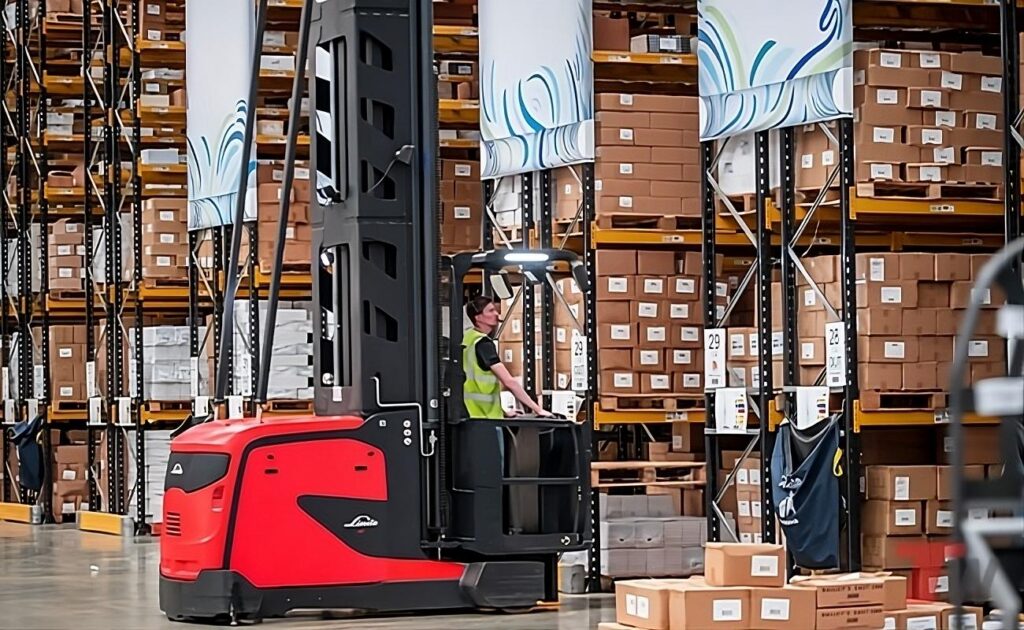
Are you confused about whether to choose a turret truck or a reach truck for your warehouse? This article will provide you with a comprehensive guide to turret trucks and reach trucks to make an informed decision. We will explore the key differences, pros and cons, and related terms and phrases.
Key Takeaways
- Turret trucks and reach trucks are two popular types of forklifts used in warehouses.
- Turret trucks are designed for narrow aisles and have a high mast that can rotate 180 degrees.
- Reach trucks are designed to operate in narrow aisles and have a narrow chassis that allows them to maneuver in tight spaces.
- The main types of reach trucks: single reach trucks, double reach, moving mast reach, high reach, stand up reach and multidirectional reach trucks.
- Turret trucks have a higher lifting capacity than reach trucks.
- When choosing between a turret truck and a reach truck, it is important to consider your specific application and requirements.
Understanding the Basics
Material handling equipment is an essential component of any warehouse or distribution center. Forklifts are the most commonly used type of material handling equipment. They are used to lift and move heavy loads from one place to another. However, there are different types of forklifts available in the market, each with its own unique features and capabilities. Two of the most popular types of forklifts are turret trucks and reach trucks.
What is a Turret Truck / VNA Truck?
Turret trucks, also known as swing-reach trucks or VNA trucks, are specially designed for narrow aisles. They have high masts that allow the operator to operate them at a higher altitude than a standard forklift. The operator compartment of a turret truck can rotate 180 degrees, which allows the operator to pick up and place loads in both directions without having to turn the truck around. This feature makes turret trucks ideal for use in warehouses with narrow aisles.
Turret trucks are equipped with a turret head that can rotate 180 degrees. The turret head is mounted on a mast that can be raised and lowered. The forks are attached to the turret head and can be extended and retracted. This allows the operator to pick up and place loads in both directions without having to turn the truck around. Turret trucks are ideal for use in warehouses with narrow aisles because they can operate in tight spaces.
What is a Reach Truck?
A reach truck is a type of forklift that is designed to operate in narrow aisles. It has a narrow chassis that allows it to maneuver in tight spaces. The forks of a reach truck are attached to a mast that can be extended and retracted. This allows the operator to pick up and place loads at a higher altitude than a standard forklift. Reach trucks are ideal for use in warehouses with high racks.
The main types of reach trucks: single reach trucks, double reach, moving mast reach, high reach, stand up reach truck and multidirectional reach trucks. Single reach trucks can reach a single pallet position into racking. They’re ideal for single-deep pallet storage. Double reach trucks can reach two pallet positions into racking. This allows warehouses to increase their storage density. Moving mast reach trucks have a mast that moves forward and backward on rails. This allows them to reach higher than other types of reach trucks. Multidirectional reach trucks are a combination of a regular single-reach truck and a moving mast reach truck.
Turret Truck vs Reach Truck: Key Differences and Similarities
Turret trucks and reach trucks are both designed to operate in narrow aisles. They have high masts that allow the operator to operate them at a higher altitude than a standard forklift. However, there are some key differences between the two types of forklifts.
One of the main differences between turret trucks and reach trucks is the way they operate. Turret trucks have a turret head that can rotate 180 degrees. This allows the operator to pick up and place loads in both directions without having to turn the truck around. Reach trucks, on the other hand, have a narrow chassis that allows them to maneuver in tight spaces. The forks of a reach truck are attached to a mast that can be extended and retracted. This allows the operator to pick up and place loads at a higher altitude than a standard forklift.
Another key difference between turret trucks and reach trucks is their lifting capacity. Turret trucks have a higher lifting capacity than reach trucks. This is because they are designed to operate in narrow aisles and can lift heavier loads. Reach trucks, on the other hand, have a lower range of lifting capacities than turret trucks. This is because they are designed to operate in high racks and maneuver in tight spaces. The lifting capacity of a reach truck depends on the type of reach truck. Single reach trucks have a lower lifting capacity than double reach trucks, which have a lower lifting capacity than moving mast reach trucks. Multidirectional reach trucks have the lowest lifting capacity among all types of reach trucks.
Pros and Cons of Each Type
Turret trucks and reach trucks have their own set of pros and cons. Turret trucks are ideal for use in warehouses with narrow aisles. They have a higher lifting capacity than reach trucks and can lift heavier loads. They also have a turret head that can rotate 180 degrees, which allows the operator to pick up and place loads in both directions without having to turn the truck around. However, turret trucks are more expensive than reach trucks and require more maintenance.
Reach trucks, on the other hand, are ideal for use in warehouses with high racks. They have a narrow chassis that allows them to maneuver in tight spaces. They also have a lower range of lifting capacities than turret trucks. However, reach trucks are less expensive than turret trucks and require less maintenance.
Turret Truck vs Reach Truck: Which One is Best for Your Warehouse?
The choice between a turret truck and a reach truck depends on your specific application. If you have a warehouse with narrow aisles and need to lift heavy loads, a turret truck may be the best choice for you. If you have a warehouse with high racks and need to maneuver in tight spaces, a reach truck may be the best choice for you.
Swing Reach Truck: A Special Type of Reach Truck
A swing reach truck is a special type of reach truck that is designed to operate in very narrow aisles. It has a unique feature that allows the operator to swing the mast and forks to the side, which allows the truck to operate in aisles as narrow as 5 feet. Swing reach trucks are ideal for use in warehouses with very narrow aisles.
Conclusion: Making the Right Choice for Your Warehouse
Choosing the right forklift for your warehouse is an important decision. Turret trucks and reach trucks are both designed to operate in narrow aisles, but they have different features and capabilities. By understanding the pros and cons of each type of forklift and your specific application, you can make an informed decision that will help you optimize your warehouse operations.
Common FAQs
What is the difference between a reach truck and a turret truck?
A reach truck is designed for narrow aisles and uses an extending mast to handle pallets at medium heights, making it ideal for high racks in tight spaces. A turret truck, also known as a VNA truck, features a rotating turret head that allows the forks to pivot 180°, enabling it to pick up and place loads from either side of the aisle without turning the truck. Turret trucks can reach higher and work in even narrower aisles than most reach trucks.
What are the disadvantages of turret trucks?
Disadvantages of turret trucks include a higher purchase cost, the need for specialized aisle designs and wire guidance systems, higher maintenance costs, limited outdoor use, and a steeper learning curve for operators. They are also less versatile for loading trailers or working beyond narrow aisles.
What is another name for a turret truck?
A turret truck is also called a swing reach truck or a very narrow aisle (VNA) truck.
What is the difference between a turret and a forklift?
A turret truck is a specialized type of forklift designed for narrow aisles, featuring a rotating turret head for side-to-side pallet handling at great heights. Standard forklifts, however, are more general-purpose and typically handle loads by lifting straight ahead, with less maneuverability and reach in tight aisles.
What is the difference between a turret truck and a forklift?
While all turret trucks are forklifts, not all forklifts are turret trucks. Turret trucks are purpose-built for very narrow aisle operation and feature masts and forks that can rotate, allowing them to access both sides of an aisle without turning. Standard forklifts (sit-down, counterbalance) are less suitable for high stacking in tight spaces.
What is a turret truck used for?
Turret trucks are used primarily in warehouses with very narrow aisle (VNA) racking. They maximize space by allowing racks closer together, enabling high stacking operations, fast picking, and pallet handling in tight spaces.
How high can a turret truck go?
Modern turret trucks can reach heights of 40 to 55 feet (12–16.5 meters), depending on the model. This makes them ideal for high-bay warehouses and dense vertical storage.
What are the different types of turret trucks?
The main types of turret trucks include man-up turret trucks, where the operator rises with the load, and man-down turret trucks, where the operator stays at ground level. Both can have varying lift heights and load capacities, and are designed for high-density, very narrow aisle operations.
What are the applications of a turret truck?
Turret trucks are used in high-density warehouses, distribution centers, and facilities maximizing vertical storage. Applications include order picking, pallet storage and retrieval, and operations where maximizing available floor space and fast throughput are critical.
How much does a turret truck weigh?
The average turret truck weighs between 7,000 and 10,000 pounds (3,175–4,535 kg), depending on model, lift height, and battery size, though weight may vary by manufacturer and specifications.
What are the key features of a turret truck?
Key features include a rotating turret head (up to 180°), high lifting capacity and reach (up to 55 feet), compact chassis for narrow aisles, advanced operator controls, guidance systems for precise movement, and safety sensors for stable operation at height.
What are the safety considerations for operating a turret truck?
Operators must complete specialized training and wear harnesses when elevated. Pre-use inspections, attentive driving, following guidance systems, keeping the load balanced and within rated capacity, and awareness of warehouse conditions (aisle width, floor quality) are crucial for turret truck safety.
What are the pros and cons of a reach truck versus a turret truck?
Reach trucks are more affordable, easier to operate, and flexible for different warehouse uses, but can’t stack as high or work in aisles as narrow as turret trucks. Turret trucks allow maximum space utilization and lift heights, but require higher investment, specialized infrastructure, and are mainly limited to indoor, narrow aisle settings.
Which is better for narrow aisles: reach truck or turret truck?
Turret trucks are generally better for very narrow aisles (VNA), allowing aisles as tight as 5–6 feet, while reach trucks usually require wider aisles. If maximizing space and vertical storage is the main goal, turret trucks are preferred.
Can a reach truck replace a turret truck?
A reach truck may suffice for less dense storage and lower stacking needs. However, it cannot match the vertical reach or extreme aisle-navigating ability of a turret truck, so it can’t fully replace a turret truck in VNA applications.
Are turret trucks harder to operate than reach trucks?
Turret trucks require more specialized training due to their rotating mechanisms, guidance systems, and operation at great heights. The operator rides up with the load on some models, which adds complexity compared to traditional reach trucks.
Do turret trucks require special warehouse design?
Yes, turret trucks typically require very narrow, straight aisles, often equipped with wire or rail guidance systems. Floor flatness and rack alignment are critical for safe, efficient turret truck operation.
What maintenance is needed for turret trucks?
Routine maintenance includes battery care (for electric models), inspection of the guidance system, sensors, mast, and fork assemblies, and checking moving parts for wear. Due to their complexity, service should be performed by technicians trained in VNA equipment.
What training/certification is required for turret truck operators?
Operators need OSHA-compliant forklift certification plus additional training specific to turret trucks, including operation at height, use of guidance systems, and emergency procedures.
What are the alternatives to turret trucks for very narrow aisles?
Alternatives include articulated forklifts, multi-directional trucks, and shuttle or automated guided vehicles (AGVs). However, for maximum stacking height and space optimization, turret trucks are often preferred.
